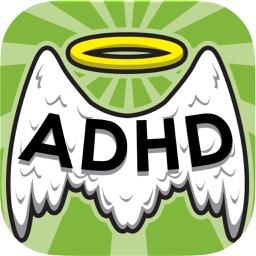Attention-Deficit/Hyperactivity Disorder (ADHD) is often seen through a lens of challenges and difficulties. The condition, characterized by symptoms such as inattention, hyperactivity, and impulsivity, can make everyday tasks and responsibilities seem overwhelming. However, it's important to recognize that ADHD also brings unique strengths and opportunities for creativity and innovation. By adopting creative solutions, individuals with ADHD can transform their challenges into opportunities, leveraging their distinct cognitive styles to achieve success and fulfillment.
Understanding ADHD: Challenges and Strengths
ADHD is typically characterized by difficulties in sustaining attention, organizing tasks, and controlling impulses. These challenges can affect various areas of life, including academic performance, workplace productivity, and personal relationships. However, symptoms of ADHD is not solely a disorder of deficits; it also encompasses unique strengths such as hyperfocus, creativity, and energetic problem-solving.
People with ADHD often exhibit high levels of creativity, an ability to think outside the box, and a propensity for risk-taking that can lead to innovative solutions. Recognizing and harnessing these strengths can be key to turning ADHD-related challenges into opportunities.
Creative Strategies for Managing ADHD
1. Embrace the Power of Hyperfocus
Hyperfocus is a phenomenon where individuals with ADHD become intensely concentrated on a task or activity. While this can be a double-edged sword, with the potential for neglecting other responsibilities, it also offers a chance to achieve remarkable results in areas of deep interest. To harness the power of hyperfocus:
Focus on activities and projects that genuinely excite you. This will increase the likelihood of entering a hyper focused state.
Define specific, achievable goals for your hyperfocus periods to ensure that your energy is directed productively.
Employ tools to remind you to take breaks and switch tasks, preventing potential burnout from excessive focus.
2. Implement Structured Flexibility
Structure and organization are often challenging for individuals with ADHD, but a flexible approach can make these tasks more manageable:
Design a routine that incorporates flexibility. Use tools like digital calendars with reminders to help manage tasks while allowing room for spontaneity.
Use color-coded charts, lists, and sticky notes to keep track of tasks and deadlines. Visual reminders can be more effective than written ones for many individuals with ADHD.
Large tasks can be overwhelming. Breaking them down into smaller, manageable steps can make them seem less daunting and easier to complete.
3. Leverage Technology for Organization
Technology can be a powerful ally in managing ADHD:
Use apps like Todoist, Trello, or Asana to keep track of tasks and deadlines. These tools offer visual and organizational features that can help manage ADHD-related challenges.
Applications such as Evernote or Notion can help you organize thoughts, jot down ideas, and keep track of important information.
Tools like RescueTime or Toggl can help monitor how time is spent, identify productivity patterns, and make necessary adjustments.
4. Cultivate Creative Outlets
ADHD often comes with a high degree of creativity and a propensity for thinking differently. Cultivating creative outlets can help channel this energy constructively:
Pursue hobbies such as painting, writing, or music. These activities not only provide a creative outlet but also help in managing stress and improving focus.
Whether in a professional setting or personal project, engaging in brainstorming sessions can help generate innovative ideas and solutions.
Try new activities or learn new skills. Novel experiences can stimulate creativity and provide fresh perspectives on problem-solving.
5. Foster a Supportive Environment
Creating a supportive environment is crucial for managing ADHD effectively:
Connect with others who understand ADHD. This can include support groups, online communities, or friends and family who offer encouragement and practical advice.
Be open about your ADHD with colleagues, employers, or teachers. This transparency can lead to accommodations and support that make managing ADHD easier.
Working with a therapist or coach who specializes in ADHD can provide personalized strategies and support tailored to your unique needs.
6. Develop Self-Compassion and Resilience
treatment of ADHD can sometimes lead to self-doubt and frustration. Developing self-compassion and resilience is essential:
Techniques such as meditation and mindfulness can help manage stress, improve focus, and promote a positive outlook.
Recognize that perfection is not always attainable. Set achievable goals and celebrate progress, no matter how small.
View challenges as opportunities for growth. Reflect on what went wrong, adjust your approach, and move forward with renewed determination.
Turning Challenges into Opportunities
The key to transforming ADHD-related challenges into opportunities lies in leveraging individual strengths and adopting creative solutions. By embracing hyperfocus, using technology, cultivating creative outlets, and fostering a supportive environment, individuals with ADHD can turn their unique cognitive style into an asset.
Furthermore, self-compassion and resilience play a critical role in navigating the ups and downs of managing ADHD. By focusing on personal growth and harnessing innate strengths, individuals can achieve a sense of fulfillment and success, not despite their ADHD but because of it.
In conclusion, ADHD is not solely a set of difficulties but a different way of interacting with the world that comes with its own set of opportunities. By embracing creative strategies and nurturing personal strengths, individuals with ADHD can transform their challenges into powerful assets, paving the way for personal and professional success.

